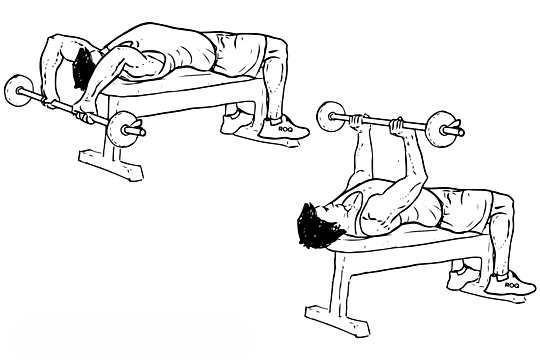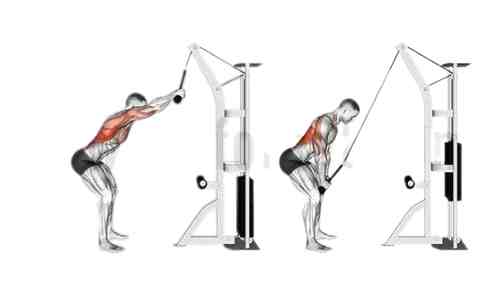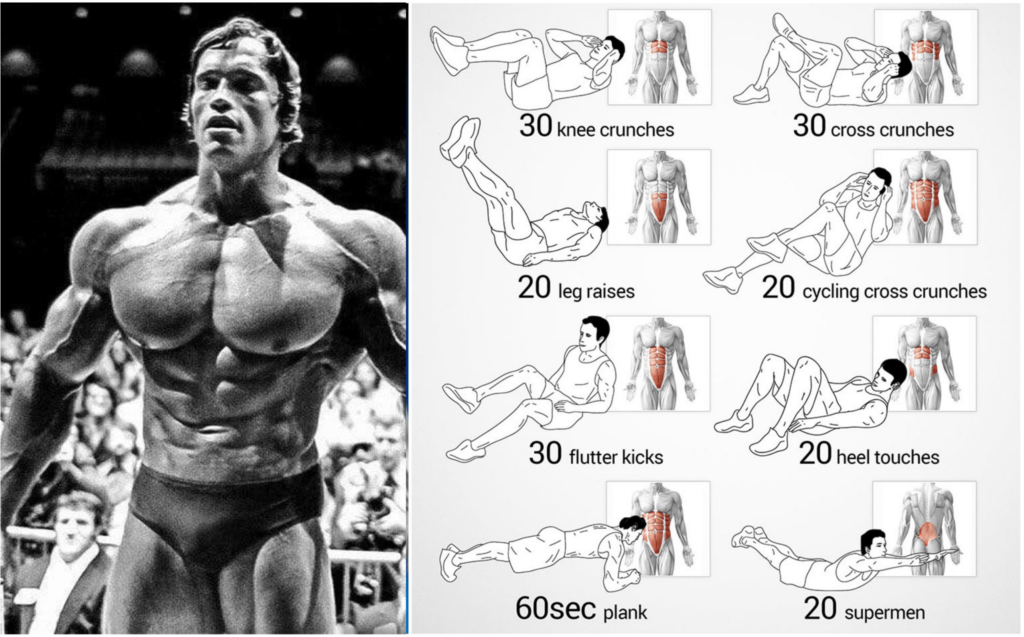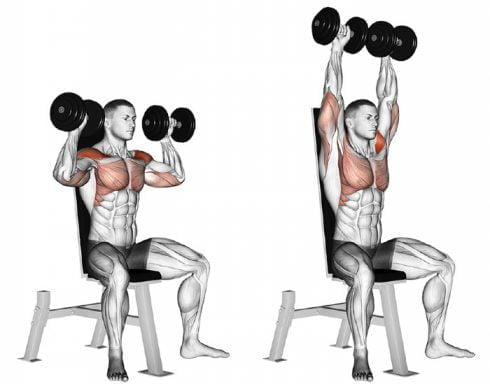Welcome to our deep dive into one of the most effective yet underappreciated exercises for strengthening your upper body – the Bent Arm Dumbbell Pullover. This powerful exercise, often overlooked in favor of more popular chest and back workouts, targets several muscle groups simultaneously, offering a host of benefits.
SHOP FOR THE ADJUSTABLE DUMBBELL SET ON AMAZON
Whether you’re a seasoned gym-goer or a fitness newbie, understanding the mechanics of the Bent Arm Dumbbell Pullover can help you optimize your workout routine. In this article, we’ll explore the muscles this exercise works, the correct technique, common mistakes to avoid, and how to incorporate it into your fitness regimen.
Understanding the Bent Arm Dumbbell Pullover

The bent arm dumbbell pullover involves lying on your back on a bench with a dumbbell in hand, arms bent at the elbow. The primary movement consists of lowering the dumbbell backward over your head, and then pulling it back up to the starting position. This exercise engages the muscles of the back, chest, and arms.
Muscles Engaged
- Pectoralis Major (Chest Muscles): This is the primary muscle group that gets worked. The pullover motion stretches these muscles, helping to develop and define them.
- Latissimus Dorsi (Back Muscles): These are the large muscles on your back, often referred to as ‘lats’. The pullover motion engages these muscles, helping to widen and strengthen your back.
- Triceps: While the chest and back muscles do most of the work, the triceps are also engaged during the pullover motion, particularly during the lifting phase.
- Rhomboids: These muscles, located in your upper back, are worked during the pullover motion. They play a key role in retracting the scapula, which is involved in the pullover motion.
- Serratus Anterior: This muscle runs along the side of your chest, under the pecs. It’s engaged during the pullover motion, particularly when you’re extending your arms to lower the dumbbell.
Equipment Needed
One of the beauties of the bent arm dumbbell pullover lies in its simplicity. All you need is a flat or incline bench and a dumbbell. Choose a weight that challenges you but allows you to maintain proper form throughout the exercise.
Having the right equipment ensures a safe and effective workout, so make sure your bench is stable, and your dumbbell is securely gripped.
Benefits of Including Bent Arm Dumbbell Pullovers in Your Routine
Bent arm dumbbell pullovers are a great exercise for strengthening your chest and back muscles, as well as improving your posture and flexibility. Here are some benefits of including them in your routine:
1. Targeting the Lats and Chest: The primary muscles engaged during bent arm dumbbell pullovers are the latissimus dorsi, commonly known as the lats, and the pectoralis major, or chest muscles. This dual muscle activation makes it an excellent compound movement for sculpting a well-defined upper body.
2. Improving Shoulder Mobility: The nature of the bent arm dumbbell pullover encourages a wide range of motion in the shoulder joints. By performing this exercise regularly, you enhance shoulder mobility and flexibility, reducing the risk of stiffness and promoting better overall joint health.
3. Strengthening the Triceps: While the focus is on the lats and chest, the triceps also play a supportive role in stabilizing the arms during the pullover motion. This engagement provides an additional benefit by contributing to tricep strength and definition.
4. Enhancing Core Stability: To execute the bent arm dumbbell pullover effectively, you need to maintain a stable core throughout the movement. This constant engagement of the core muscles helps improve core strength and stability, leading to better posture and overall functional fitness.
5. Isolation of the Serratus Anterior: The serratus anterior, often referred to as the “boxer’s muscle,” is activated during the eccentric (lengthening) phase of the bent arm dumbbell pullover. This isolation can contribute to improved definition and strength in this muscle group, adding aesthetic appeal to your physique.
6. Versatility in Training: The bent arm dumbbell pullover is a versatile exercise that can be easily modified to target specific muscle groups. Whether you choose to perform it on an incline bench for an increased stretch or opt for single-arm variations, this exercise allows for diverse training options to keep your workouts engaging and effective.
7. Caloric Expenditure and Metabolic Boost: Engaging multiple muscle groups simultaneously, the bent arm dumbbell pullover becomes a calorie-burning powerhouse. The more muscles activated during an exercise, the greater the metabolic demand, potentially aiding in weight management and fat loss when combined with a balanced diet.
SHOP FOR THE ADJUSTABLE BENCH ON AMAZON
Incorporating bent arm dumbbell pullovers into your fitness routine not only diversifies your training but also provides a holistic approach to upper body development. Whether your goal is to build muscle, enhance flexibility, or improve overall strength, this exercise proves to be a valuable asset in achieving a well-rounded and functional physique.
Proper Form and Technique
Mastering the bent arm dumbbell pullover requires precision and attention to detail. This compound exercise engages multiple muscle groups, making it crucial to execute with proper form to maximize its benefits and prevent injury. Here’s a step-by-step guide to ensure you perform the bent arm dumbbell pullover with impeccable technique:

- Starting Position: Lie down on a flat bench with your feet firmly planted on the ground. Hold a dumbbell with both hands, bending your arms at a 90-degree angle. The dumbbell should be positioned over your chest.
- The Pullover Motion: Keeping your arms bent, slowly lower the dumbbell back over your head until your upper arms are in line with your torso. The dumbbell should be hovering just above the floor.
- The Lifting Phase: Using your chest and back muscles, lift the dumbbell back to the starting position over your chest. Make sure to keep your arms bent and your movements controlled.
- Breathing: Inhale as you lower the dumbbell, and exhale as you lift it back up. Proper breathing is crucial for maintaining control and stability during the exercise.
Common Mistakes to Avoid
- Using Too Much Weight: This is a common mistake that can lead to poor form and potential injury. It’s better to use a lighter weight and perform the exercise correctly.
- Moving Too Quickly: The Bent Arm Dumbbell Pullover is not about speed. Moving too quickly can cause you to lose control of the dumbbell and not fully engage the targeted muscles.
- Not Keeping Arms Bent: Your arms should remain bent at a 90-degree angle throughout the exercise. Straightening your arms can put unnecessary strain on your elbows and shoulders.
- Lifting the Hips: Some people have a tendency to lift their hips as they lower the dumbbell. This can reduce the effectiveness of the exercise and put strain on the lower back.
- Not Breathing Properly: Remember to inhale as you lower the dumbbell and exhale as you lift it. Holding your breath or breathing out of sync can make the exercise more difficult and less effective.
SHOP FOR THE FITNESS TRACKER ON AMAZON
By adhering to these guidelines and focusing on perfecting your form, you’ll unlock the full potential of the bent arm dumbbell pullover, fostering muscle growth and strength while minimizing the risk of injury.
Bent Arm Dumbbell Pullover Variations
Variety is the spice of life, and the same holds true in the world of fitness. When it comes to the bent arm dumbbell pullover, there’s more than one way to target those muscles and keep your workouts engaging. Let’s dive into some effective variations of the bent arm dumbbell pullover that can add a new dimension to your training routine.
1. Bent arm barbell pullover

This variation uses a barbell instead of a dumbbell, which can increase the load and stability challenge. You can also use an EZ bar to reduce the stress on your wrists. To perform this variation, hold the barbell with a shoulder-width grip and follow the same movement as the dumbbell pullover.
2. Machine pullover

This variation uses a machine that mimics the pullover motion. It can provide more consistent resistance and support throughout the movement. To perform this variation, sit on the machine and adjust the seat and handles to fit your height. Grab the handles and pull them over your head until they reach your chest. Then slowly return to the starting position.
3. Standing cable pullover

This variation uses a cable machine with a rope attachment. It can provide more constant tension and range of motion. To perform this variation, stand facing the cable machine and grab the rope with both hands. Lean forward slightly and extend your arms over your head. Pull the rope down to your thighs, keeping your arms straight. Then slowly return to the starting position.
4. Standing banded pullover
This variation uses a resistance band that you can attach to a sturdy object above your head. It can provide more flexibility and convenience. To perform this variation, stand facing the band and grab it with both hands. Lean forward slightly and extend your arms over your head. Pull the band down to your thighs, keeping your arms straight. Then slowly return to the starting position.
SHOP FOR THE RESISTANCE BAND ON AMAZON
Remember to start with a weight that allows you to maintain proper form, gradually increasing the resistance as your strength improves. Incorporating these variations into your routine not only keeps your workouts exciting but also ensures that you’re working various angles of the targeted muscle groups.
Safety Precautions and Tips
Safety should always be a top priority when engaging in any fitness routine, including the bent arm dumbbell pullover. Here are some crucial safety precautions and tips to keep in mind:
1. Warm-Up Adequately: Before diving into the bent arm dumbbell pullover, ensure your body is properly warmed up. Engage in light cardiovascular exercise and dynamic stretches to increase blood flow to the muscles.
2. Choose the Right Weight: Select a dumbbell weight that challenges you without compromising your form. Starting with a lighter weight allows you to focus on mastering the movement before increasing resistance.
3. Maintain Proper Form: Proper form is paramount to avoid injuries and maximize the effectiveness of the exercise. Keep a slight bend in your elbows, engage your core, and ensure a controlled movement throughout the entire range of motion.
4. Use a Stable Bench: Perform the bent arm dumbbell pullover on a stable and secure bench. This helps maintain balance and reduces the risk of accidents. Ensure the bench is set at an appropriate incline or kept flat based on your preference.
5. Start with a Spotter: If you’re new to the exercise or lifting heavy weights, having a spotter can provide an extra layer of safety. A spotter can assist you in case you struggle with the weight or lose control during the movement.
6. Listen to Your Body: Pay attention to any discomfort, pain, or unusual sensations during the exercise. If something doesn’t feel right, stop immediately and reassess your form or reduce the weight.
7. Gradual Progression: Progress gradually by increasing the weight incrementally. Avoid making sudden jumps in resistance to prevent overloading your muscles and joints.
8. Breathe Properly: Maintain a consistent breathing pattern throughout the exercise. Inhale during the eccentric (lowering) phase and exhale during the concentric (lifting) phase to stabilize your core and provide oxygen to your muscles.
9. Stay Hydrated: Proper hydration is essential for overall health and performance. Drink an adequate amount of water before, during, and after your workout to stay hydrated.
SHOP FOR THE BEST PROTEIN SUPPLEMENTS ON AMAZON
By following these safety precautions and tips, you can minimize the risk of injury and make the most of the bent arm dumbbell pullover as a safe and effective addition to your fitness regimen.
FAQs
Q 1. Can beginners perform this exercise?
Ans. Yes, beginners can perform the bent arm dumbbell pullover, but it’s crucial to start with lighter weights to focus on form and gradually progress. If you’re new to exercising, consider seeking guidance from a fitness professional to ensure proper execution.
Q 2. How much weight should I use?
Ans. The appropriate weight for the bent arm dumbbell pullover varies from person to person. As a general guideline, start with a lighter weight that allows you to maintain proper form and complete the desired repetitions. Gradually increase the weight as your strength and comfort with the exercise improve.
Q 3. Are there any alternatives to the bent arm dumbbell pullover?
Ans. Yes, there are alternative exercises that target similar muscle groups. Some alternatives include cable pullovers, barbell pullovers, and machine pullovers. Experiment with different variations to find what works best for your body and fitness goals.
Q 4. Can the bent arm dumbbell pullover be done at home without a bench?
Ans. While a bench is commonly used for bent arm dumbbell pullovers, you can modify the exercise by lying on the floor or using an exercise ball. However, using a bench provides better stability and allows for a fuller range of motion.
Q 5. Is the bent arm dumbbell pullover suitable for individuals with shoulder issues?
Ans. Individuals with pre-existing shoulder issues should consult with a healthcare professional or fitness expert before attempting the bent arm dumbbell pullover. If approved, start with light weights and focus on a controlled motion to avoid exacerbating shoulder discomfort.
Q 6. Can Bent Arm Dumbbell Pullovers help improve posture?
Ans. Yes, Bent Arm Dumbbell Pullovers can help improve posture. They strengthen the back and chest muscles, which are important for maintaining good posture.
Q 7. What other exercises pair well with Bent Arm Dumbbell Pullovers?
Ans. Bent Arm Dumbbell Pullovers pair well with other upper body exercises like push-ups, bench press, and rows. You can also pair them with lower body exercises like squats or lunges for a full-body workout.
Q 8. How often should I incorporate Bent Arm Dumbbell Pullovers into my workout routine?
Ans. This depends on your fitness goals. If you’re aiming to build strength and muscle, you might include this exercise in your upper body workouts 1-2 times per week. Always allow at least 48 hours of rest between workouts that target the same muscle group to allow for recovery.
Conclusion
In conclusion, the Bent Arm Dumbbell Pullover is a versatile and effective exercise that targets multiple muscle groups, including the chest, back, and arms. Whether you’re a seasoned gym-goer or a fitness newbie, incorporating this exercise into your workout routine can help improve your upper body strength, enhance muscle definition, and even improve your posture. Remember, the key to success with this exercise, like any other, is proper form and technique. So, take the time to master the basics, listen to your body, and most importantly, enjoy the journey to a stronger, healthier you.

Good day, and welcome to Fitthour. My name is Shubham Vijay, and I am a certified personal trainer and nutrition coach with 6 years of experience in the fitness industry. At Fitthour, we specialize in types of training, such as strength training, cardio, or HIIT, and our mission is to help clients achieve their fitness goals and improve their overall health.




